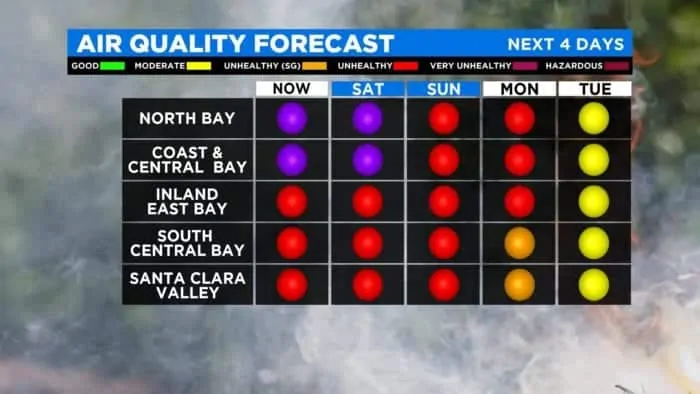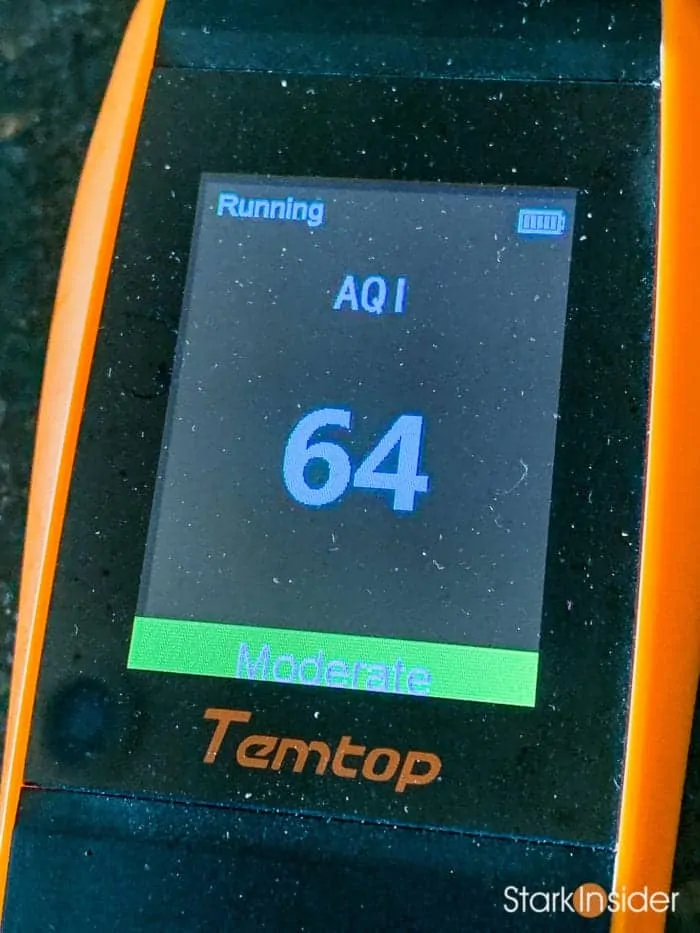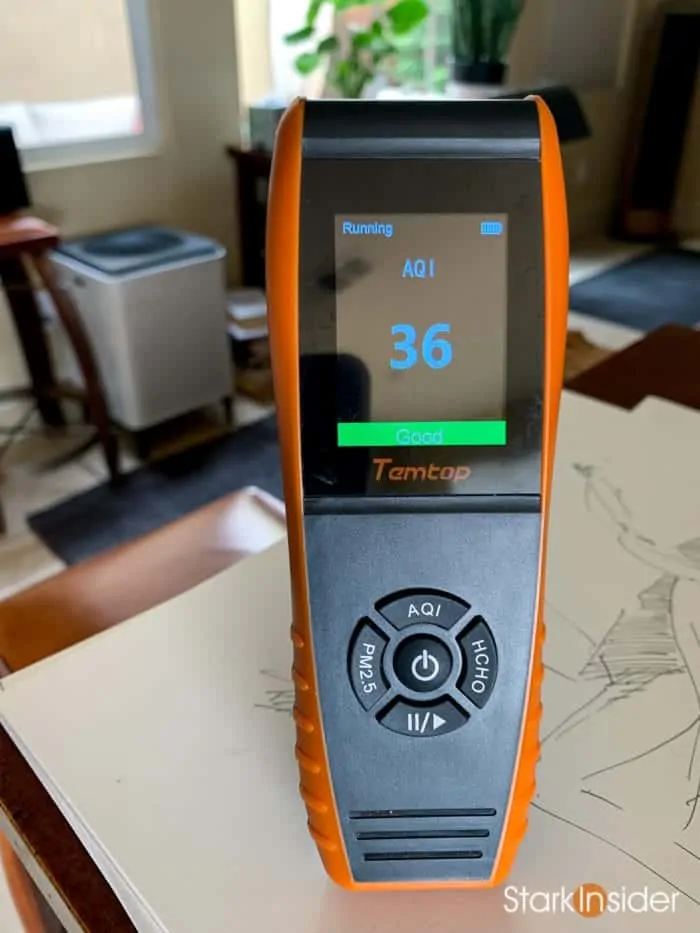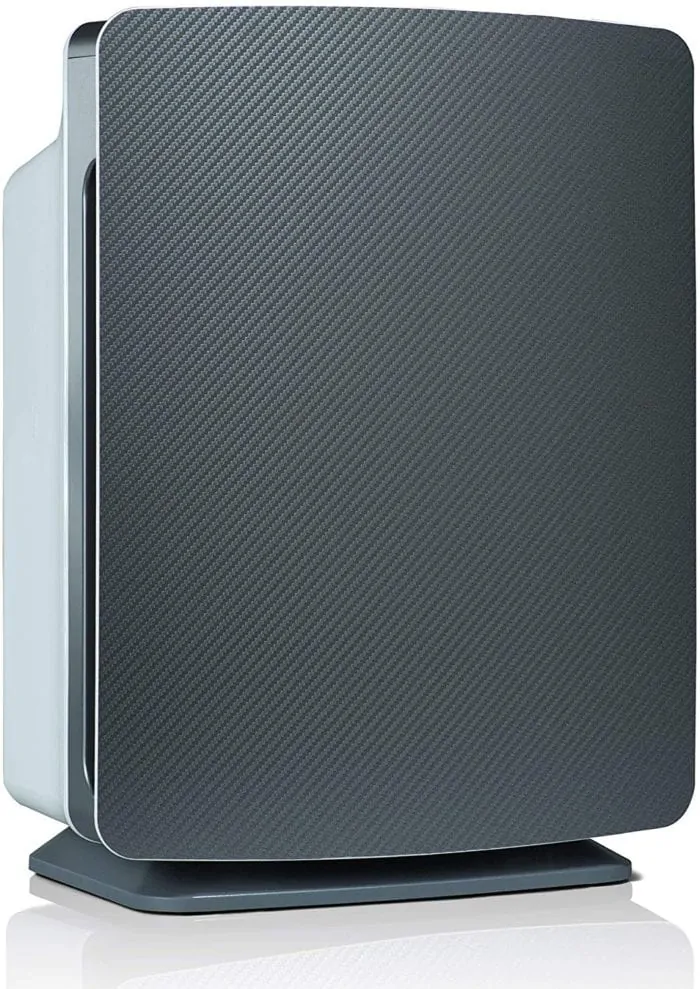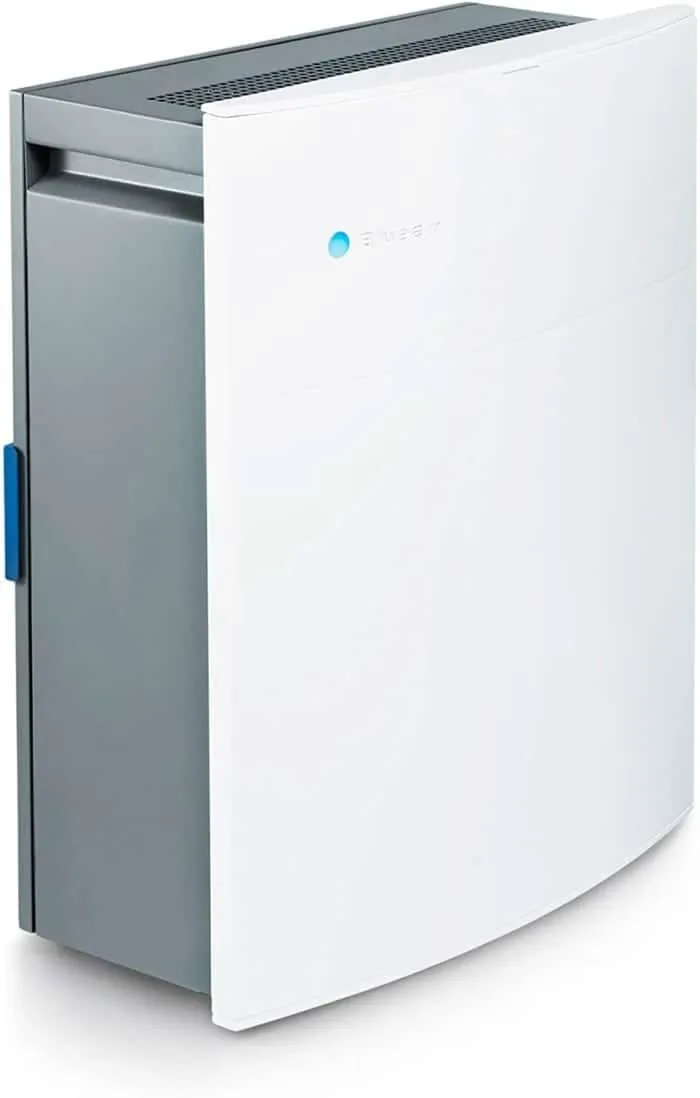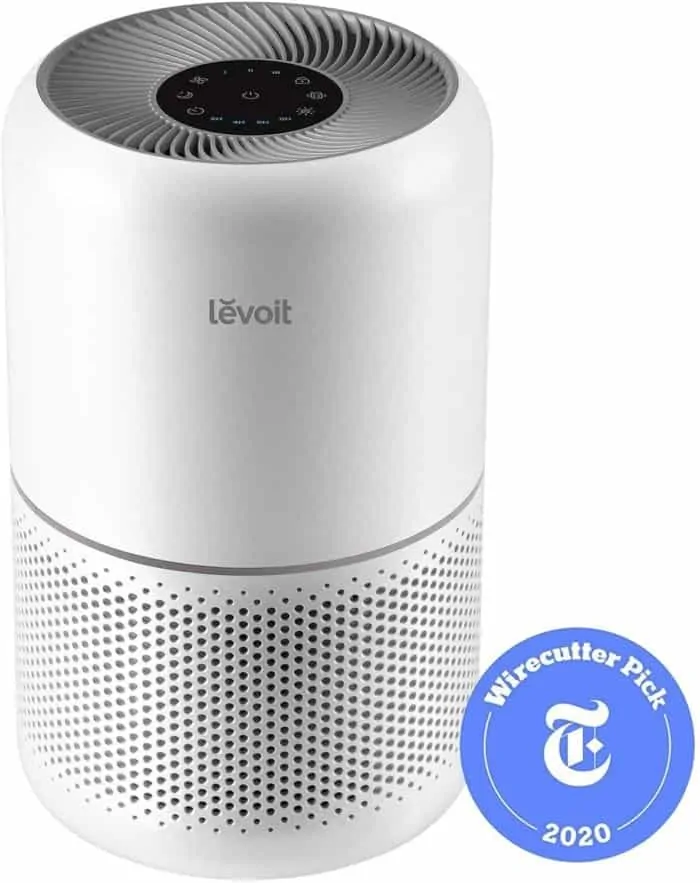Updated to include new Bissell air purifier models, a well-rated budget Levoit option and link for the Temtop air quality testing tool.
Air purifiers are an increasingly popular way to improve the air quality inside the home. Especially models which feature a HEPA filter — a NASA study suggests why HEPA filters are so efficient, and can even capture ultrafine particles below the 0.3-micron HEPA test standard. Now companies like Tesla are even including HEPA-based filters as an option on some of its cars. That’s a smart idea given the amount of pollutants we encounter while commuting. The same can be certainly said for the air we breathe in our homes.
Last year I dove full-on into the world of HEPA air purifiers. Why not? Health is important and with the increasing risk of wildfire smoke here in California (and along the West Coast) getting into the home I thought it might be a good idea to implement a defense. 10 years ago the idea would never have crossed my mind, maybe not even 5 years ago. Such is the world of climate change and its increasingly devastating impact.
Life Under Smoke-Filled Skies
HEPA Air Purifiers to the Rescue
I probably went a little overboard. Almost each room in our home now has an air purifier. We opted for a large capacity Coway Airmega for the great room (kitchen and family room). A smaller Winix serves duty in the living room. Upstairs we have a Coway, Alen, RabbitAir and a Blueair. All told, 6 air purifiers. Part of my impetus for going whole hog was in part to write about my experience and write reviews here on Stark Insider. Do you need so many? Probably not. But most manufacturers specify the size of room in square feet that the purifier can handle, and also how many times the air will be exchanged in an hour so you can make informed decisions. These are important considerations to keep in mind when shopping various models. I’ve been running these for over a year now so I have some thoughts on what I believe are the most effective.
Key point: The top five list below is specifically focused on smoke and its removal.
A quick point on smoke odor removal. When researching you’ll note that almost every air purifier comes with a HEPA grade filter. Okay, that makes sense. This is the filter that will capture almost all airborne particles (99.97%). Then there’s another filter (a second “stage”) which is typically some sort of carbon filter. You’ll find in most lower cost air purifiers this carbon filter will be a simple sheet, sometimes called a deodorization filter. These are less effective at removing smoke. So, instead, I highly recommend you consider ones that come with an “active” carbon filter (sometimes referred to as a Honeycomb filter). These are filters that actually have small bits of carbon in them. Shake the filter and you can hear the carbon jump around. Yes, these are pricier. But in my experience, and based on many studies, these active carbon filters are far more effective in doing the job when it comes to reducing the harmful effects of smoke (and VOCs as well).
So this list of recommendations includes air purifiers that ship with an active carbon filter and I’ve excluded any that do not (though if you’re concerned only about PM2.5 dust removal and allergies here’s an inexpensive Coway air purifier I recommend).
Healthy Living Top 5: Best Air Purifiers for Reducing Wildfire Smoke
(in no particular order)
1. Coway Airmega 400 or 400S
Best for: Large spaces.
Special features: Dual filters (left and right).
Why I like it: High performance fan. Aesthetically pleasing design. Excellent app with scheduling.
Price: $486 USD for the Airmega 400, $589 USD for the Airmega 400S
Replacement filter: $109 USD for the Airmega Max 2 Replacement Filter (set of 2)
South Korean-based Coway has long been a trusted supplier of air purifiers for the home. The Airmega 400/400S (and the smaller 300/300S) are excellent examples of the company’s ingenuity and know-how. I’d recommend these for larger spaces. With two filters (left and right) the Airmega has plenty of capacity to filter high volumes of air each hour. The 400 is rated up to 1,560 sq. ft. and the smaller 300 up to 1,256 sq. ft. The “S” denotes smart, as in Wi-Fi and a companion app. I have the S as I can schedule the Airmega to run overnight at high speeds so the air in our combo kitchen and living room space is clean in the morning.
Also the Coway features honest-to-goodness active carbon filters (again on both the left and right sides). And they are the real deal, lots of bits of carbon. Certainly this will help remove smoke and VOCs. We inadvertently opened a door just this morning (wrongly assuming air quality was good according to the Apple Weather app). Almost immediately the Airmega kicked into high gear. We noticed the Temtop meter spike to about 188 AQI (unhealthy). We closed the door, and about an hour later things were much better. See readings below.
Replacement Airmega filters are expensive. But that’s the price to pay for real carbon. There’s just no substitute. If you’re concerned about wildfire smoke the Airmega 400/400S or 300/300S could be a good choice for your most important living spaces.
Coway Airmega 400S:
AQI TestHere’s an example of a real-world test using a Temtop air quality meter to measure indoors. By no means scientific, but I measured these results in an actual home and not a simulated lab. The Air Quality Index (AQI) started at 188 (unhealthy). I ran the Airmega 400S on high. About an hour later AQI was down to 64. 30 minutes later to 36. And another hour or so and AQI was below 10 which is considered good.
In the second photo below you can see the Airmega 400S in the background.
Aside: You may be wondering about formaldehyde (CH2O), a colorless chemical used to make furniture, laminate woods and many household goods. At best it can cause nausea, watery eyes and skin irritation and at worst can be a cancer risk. You don’t want this gas in your home. Unlike AQI I was unable to reduce formaldehyde using any of these air purifiers. The only thing that worked was opening doors and windows. General guidelines advise you should do this when safely possible for 10-15 min, twice per day. With wildfire smoke, however, you will temporarily reduce formaldehyde, but at the expense of reducing your indoor air quality (PM 2.5).
2. Winix 5500-2
Best for: No compromise value shoppers.
Special features: Compact design. Auto sleep mode based on light.
Why I like it: Relatively inexpensive model that includes an active carbon filter.
Price: $159 (try Amazon, or Costco)
Replacement filter: $47 USD (I like buying these from Amazon)
Like Coway, Winix is also based out of South Korea (a place that knows all about poor air quality) and makes well-designed products. To get an air purifier with a smoke fighting active carbon filter for such a low price is rare. Google a bit and you’ll discover this is a wildly popular model. Winix says it will “capture dust, pollen, pet dander, smoke, mold spores, VOC (volatile organic compounds) and household odors.” We’ve had great success with ours. Based on filter inspection at the one year mark the 5500-2 is trapping lots of bad stuff.
I particularly like that the Winix will switch into sleep mode when the room gets dark. You don’t need to do anything. In sleep mode the 5500-2 still runs, albeit very (very) quietly, still moving a small amount of air, but not making it impossible to sleep. Also, like the Coway Airmega, this model has a smart sensor that detects air quality and automatically kicks the fan into high gear as needed — when cooking for instance. For smaller spaces up to 360 sq. ft. the 5500-2 represents outstanding value.
Filter Replacements:
A key consideration for running costsKeep in mind you need to replace HEPA filters on an ongoing basis. Manufacturers typically recommend every six months. Actual wear will depend on many factors including: how often the fan runs, if you have kids or pets, air quality in your particular location and so on. In my experience I’ve found I can go longer than six months (for all the air purifiers in our home). In fact I swap them at about the 12 month mark. As they say your mileage may vary.
In terms of deals here’s a few ideas. Costco or your local big box store is usually an excellent place to buy filters. In fact they’re also a smart place to buy an air purifier itself as well. There’s (far) less selection than, say, Amazon, but if they do stock a model you like chances are it will be the best price around. Another suggestion: Slickdeals. Search for your air purifier/filter and if no current sales come up create an alert to be notified when one does happen. (note I have no affiliation with SD, but I use the site all the time to patiently wait for price drops on tech stuff).
Quick tip: regularly washing the reusable pre-filter is a good idea. Follow the instructions and be sure to keep the first filter (Stage 1) clean as that will extend the life of the HEPA filter sitting behind it.
3. Alen BreatheSmart FIT50
Best for: Those who care about performance and design.
Special features: Custom front panel available in eight finishes.
Why I like it: Beautiful design. Superb filter design. Reliable sensor and quiet fan (at lower settings).
Price: About $608 USD (See Amazon for options — price varies depending on filter type and panel finish)
Replacement filter: $119 (Amazon)
Alen is another household name when it comes to air purifiers (it’s all they make). Like the Coway Airmega I appreciate Alen’s focus on aesthetics. If you care about such things the Alen line-up should tickle your fancy — they look more designer than appliance. The FIT50 is a relatively new model and is suitable for spaces up to 900 sq. ft. per their specs. Unnique to most manufacturers Alen gives you four filter options. Given we’re focused on smoke here I’d recommend the “Smoke/Chemical” filter. You’ll find the usual features here including a smart sensor with AQI indicator (blue/orange/red), sleep mode, and ionizer.
For those wanting to match decor, the FIT50 comes in eight finishes — essentially the front panel which is interchangeable.
And, again, like all the air purifiers on this list, the FIT50 has active carbon (just be sure to choose the model with the Smoke/Chemical option).
Alen makes a range of BreathSmart models including the Flex, 45i, and upper range Classic and 75i. I feel the Fit50 (interesting name) is the sweet spot for most buyers.
4. RabbitAir MinusA2 (SPA-700A)
Best for: Spaces that need massive air flow.
Special features: Top choice among cigar smokers (speaking of smoke…)
Why I like it: Wall mountable. Fan is impressively powerful.
Price: $549 USD (try Amazon)
Replacement filter: $60 to $95 USD depending on type (good selection on Amazon)
Cigar smokers vouch for this one. Don’t ask me about the logic behind smoking cigars indoors while sitting next to an air purifier. But this is apparently a thing. YouTube it. In any case the fact that this genre of buyer almost exclusively chooses the RabbieAir MinusA2 might tell us something about its performance at removing smoke odors.
RabbitAir makes a few models. This one — SPA-700A — is rated up to 700 sq. ft. If you need more you can step up to the SPA-780A which will give you more coverage in addition to Wi-Fi.
One unique feature of the RabbitAir is you can mount it on the wall, and includes everything you need to install it that way if you like (if you have outlet integrated into a wall this could make for a nice, cable-free appearance). Like the Alen FIT50 you can opt for one of four filter choices: Germ Defense, Odor Remover, Pet Allergy, and Toxin Absorber.
Another thing I like is power draw. At the lowest speed the MinusA2 700A draws only 7 watts (and emits only 21 db noise) which is a fantastic result. In my tests this is among the lowest energy draws. The BlueAir Pure 411 draws even less, but it can’t match the cleaning power of the RabbitAir nor does it have an active carbon filter.
What About Capturing Coronavirus?
No evidence yet to support claims per EPAAside from wildfire smoke and allergies and pet dander and all the other myriad reasons to buy an air purifier might be the virus known as COVID-19. Based on what I’ve read so far — and there’s not much scientific study yet that I would trust in this regard, and I’m highly skeptical of marketing copy — the answer is unlikely. It’s unlikely that a HEPA air purifier will capture COVID-19. That’s because this virus is primarily transmitted (as far as scientists are telling us now with the information as of today) by contact, person-to-person. In theory if the virus were to enter the filter it would probably be trapped, yes. However, it’s more likely to be found on surfaces and, of course, in respiratory droplets.
The EPA says, “By themselves, portable air cleaners and HVAC filters are not enough to protect people from the virus that causes COVID-19.”
The best advice I can give on the topic of COVID-19 and air purifiers would be to leave it to the professionals and scientists. In this case for those interested to read more about the topic I recommend starting with the Environmental Protection Agency.
5. Blueair Classic 280i
Best for: Buyers who eschew plastic and prefer industrial steel build.
Special features: Wi-Fi. Blueair friend app.
Why I like it: Workhorse that is extremely well reviewed. AHAM certification.
Price: $429 USD (see Amazon for the various Blueair models)
Replacement filter: $49.99 USD (DualProtection is the one you want, available on Amazon)
Blueair remains one of my favorites. We have a small Pure 411 (cute little thing that hardly takes up any space) in a small bedroom we converted into a gym during shelter-in-place and love it. Made in Sweden these are well regarded and well made. The 280i is rated at 279 sq. ft. so this is best suited for a smaller space, maybe a kitchen or baby’s room.
In addition to a smart sensor that automatically adjusts fan speed accordingly, extras include Wi-Fi and an app that enables all sorts of options and controls via your phone. Also the 280i is AHAM, Energy Star and safe ozone certified.
Note that the 280i is made from a steel body. Blueair claims it’s “durable” and indeed this feels on the commercial grade side of things. No question, build quality is top notch.
Clean Air for Your Entire Home:
CoverageWhen shopping for air purifiers there’s a lot of specs that can overwhelm when trying to make an informed decision. Here’s two in particular to pay attention to.
Rated Coverage (Sq. Ft) — typically you’ll see the manufacturer’s claimed square footage that a unit can cover. Keep in mind this is based on their tests, so you may want to Google a bit to see if reviews find real world results to be true. If you have a large space, such as a great room, you’ll need a more powerful humidifier. A small bedroom might do with something smaller (and less expensive).
Clean Air Delivery Rate (CADR) — this number is a standard managed by the Association of Home Appliance Manufacturers (AHAM). So it’s vendor independent, and, therefore, a good way to compare across competing air purifiers. I won’t get into all the details here (again, Google), but you basically need to know a higher CADR means more air can be cleaned in any given time period. An air purifier with a 400 cfm (cubic feet per minute) will clean faster than one with a rating of 200 cfm.
A final point on coverage:
Single Large Air Purifier vs. Several Smaller Ones
In general, I’m a proponent of buying several smaller air purifiers rather than one big one. With multiple units you can place them as needed, and even temporarily load up and relocate them to help clean a particularly dusty or smokey space. But you may have a large home and need some sort of combination. For instance, I have a large Coway Airmega 400 in our great room. But a smaller Winix 5500-2 in another room, among other models and brands. No matter how you approach your plan for clean air, I’d suggest keeping these factors in mind so you can find the best and most economical solution.
Conclusion — Where the air is clean…
HEPA filters in combination with active carbon filters can really help improve the air quality in your home. Will they solve every single problem? Probably not. But when I change out the filters in our home I’m constantly amazed at what they pick up (and we don’t have pets). I’d rather have those dust particles (PM 2.5) trapped in a filter than floating around our living spaces. With California, Oregon and Washington and other areas facing rampant wildfires and the accompanying smoke that now floats above our cities for days on end, the case for investing — at least for me — in clean air and our health is a slam dunk. But do your own research. See what may or may not make sense for your particular lifestyle.
In summary, below are the five air purifiers I recommend for fighting smoke odors induced by wildfires. All have active carbon filters. And all are highly recommended — it would be hard to choose a winner as they all perform well and are suited for different room sizes.
Some of these are pricey, absolutely. But when you consider the value of your and your family’s health I think the investment is worthwhile.
Stark Insider Top 5:
Best Air Purifiers for Reducing Wildfire Smoke1. Coway Airmega 400 or 400S (from $486)
2. Winix 5500-2 ($149)
3. Alen BreatheSmart FIT50 (~ $600)
4. RabbitAir MinusA2 SPA-700A ($549)
5. Blueair Classic 280i ($429)
And for measuring your home’s air quality and formaldehyde levels:
Update: I should also add that Bissell has recently rolled out its “air” series of air purifiers including the air220, air320 and air400. Given Bissell’s respected brand name in the small home appliance market they may be worth a look. And, yes, they thankfully also use granular carbon bits in an active honeycomb filter, and replacements are reasonably priced. Plus: the retro design motif is super stylish. Amazon has a good comparison of the three models if you scroll down on the Bissell air320 page.
Update 2: A lot of air purifiers are stocking out due to demand from the West Coast wildfires. Here’s a suggestion below for Levoit — an excellent low cost air purifier ($99 USD) that uses a granulated carbon filter and has 4 different filter options. Also recommended by Wirecutter.
Budget Choice:
- Levoit Core 300 True Hepa Air Purifier ($99)
- For filtering smoke we recommend this Core 300 Filter:
Toxin Absorber High-Efficiency Activated Carbon Filter ($28)
Stay safe. Stay healthy.



